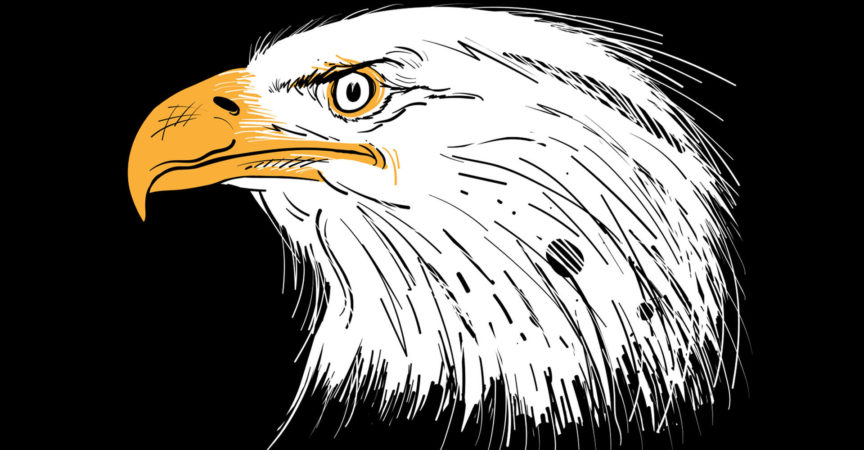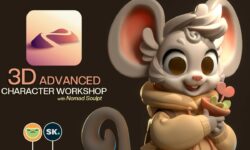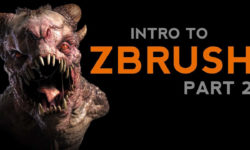Illustrator CC 2018 One-on-One Advanced
Release date:2018, March 23
Duration:18 h 15 m
Author:Deke McClelland
Skill level:Beginner
Language:English
Exercise files:Yes
Design and create amazing works of art using Adobe Illustrator CC 2018, the powerful vector-based drawing program. This comprehensive training is the first in a series of three courses by industry pro Deke McClelland. Learn how to work with artboards; how to draw anything you can imagine with the Pen, Pencil, and Curvature tools; and how to start adding color to your artwork with swatches. Deke also covers drawing shapes, adjusting strokes, formatting text, and painting digitally, with or without a tablet. Each chapter should leave you with a new set of skills—and a sense of accomplishment.
As Creative Cloud evolves, this course gets updated. Check back for new videos, new feature reviews, and new ways to work.
Topics include:
Opening, creating, saving, and closing documents
Working with artboards
Zooming and panning
Drawing lines, arcs, grids, and spirals
Drawing shapes
Creating compound paths
Working in RGB vs. CMYK color modes
Creating and applying swatches
Adjusting the line weight of strokes
Formatting text
Building custom paths with the Shape Builder and Join tools
Freeform drawing with the Pencil
Painting and erasing artwork
Drawing with the Curvature tool
Reshaping rounded paths
Making screen graphics
Introduction
Welcome to One-on-One 4m 21s
A few important items before we begin 5m 46s
1. Working with Documents
A first look at Illustrator 50s
Opening from the Windows desktop 7m 9s
Opening from the Macintosh Finder 8m 59s
Introducing the Start screen 5m 27s
Creating a new document 6m 16s
The units of design: Points and picas 7m 34s
The advanced document settings 6 m 43s
Modifying your new document 7m 57s
Saving your changes 7m 52s
Closing open documents on the PC 4m 36s
Closing open documents on the Mac 6m 6s
2. Working with Artboards
Pages of any size, at any angle 1m 3s
Using the Artboard tool 10m 51s
Undo, Redo, and Revert 3m 21s
Selecting multiple artboards 8m 14s
Creating and duplicating artboards 8m 19s
Five ways to resize artboards 8m 11s
Introducing the Artboards panel 6m 6s
Navigating between artboards 5m 43s
Aligning and distributing artboards 7m 13s
Automatically tidying up your artboards 7m 29s
Artboards and rulers 7m 26s
3. Getting Around Navigating your artwork 43s
Zooming in and out 5m 59s
Using the more precise Zoom tool 6m 22s
Zooming on a selection (or not) 2m 12s
Animated zooming and GPU Performance 7m 48s
Scrolling (or panning) a document 4m 6s
Specifying a custom zoom level 4m 18s
Working with multiple open documents 5m 49s
Customizing your panels (important!) 9m 36s
Saving your custom panels as a workspace 2m 26s
Cycling between screen modes 6m 38s
4. Drawing Lines Now, we draw 44s
Creating center guides 8m 3s
Using the Line Segment tool 6m 55s
Drawing straight lines 5m 24s
Duplicating and extending 6m 21s
Using the Move command 5m 19s
Introducing the Scissors tool 4m 20s
Joining your line segments 5m 23s
Using the Arc tool 6m 45s
Using the Rectangular Grid tool 7m 52s
Using the Polar Grid tool 3m 29s
Using the Spiral tool 7m 31s
Adding a circular end to a spiral 4m 42s
Adjusting the curvature of an arc 6m 7s
Centering all artwork on an artboard 3m 46s
5. Drawing Shapes And now, we draw better 43s
Creating a time-saving template 5m 18s
Using the Ellipse tool 7m 45s
Live ellipses and pies 4m 44s
Drawing two perfectly aligned circles 8m 22s
Creating compound paths 7m 1s
Using the Rectangle tool 5m 40s
The dynamic round corner controls 7m 39s
Adding some simple reflections 7m 49s
Rotating your artwork into position 6m 19s
Using the Polygon and Star tools 6m 8s
Working with live polygons 7m 3s
Creating the perfect five-pointed star 6m 10s
Repeating stars in alternating rows 6m 23s
Introducing the Group Isolation mode 7m 12s
Adding a drop shadow to a layer 2m 54s
Using the crazy Flare tool 6m 19s
The top-secret tilde key trick 3m 53s
6. Color and Swatches
How color works 1m 7s
The color modes: RGB vs. CMYK 8m 7s
Hue. saturation, and brightness 4m 56s
Selecting a color from the spectrum ramp 5m
Creating and applying swatches 7m 40s
Working with global swatches 7m 9s
Searching swatches by name 5m 1s
Auto-deleting and adding swatches 4m 43s
Using the Eyedropper tool 5m 8s
Loading swatches from another document 4m 18s
7. Strokes, Dashes, and Arrows The rich world of strokes 43s
Adjusting the line weight 4m 42s
How strokes align to path outlines 6m 45s
Caps Joins, and miter limit 6m 25s
Making practical use of caps and joins 6m 7s
Dashes and arrowheads 7m 24s
Variable-width strokes 5m 58s
Numerically adjusting Width points 5m 25s
Custom aligning strokes to paths 3m 21s
Creating a custom Width Profile 7m
Creating a classic round-dotted outline 3m 25s
Drawing a quick-and-dirty gear 7m 6s
Combining multiple strokes 4m 18s
Offsetting strokes to simulate depth 6m 8s
8. Creating and Formatting Type
Text at its best 1m 2s
Setting up page margins 7m 54s
Placing and flowing text 6m 43s
Creating multicolumn text frames 5m 41s
The Smart Punctuation command 4m 8s
Working with point type 7m 2s
Formatting display text 8m 39s
Fitting headline and optical kerning 7m 55s
Formatting body copy 8m 14s
Creating a drop cap 3m 39s
Wrapping text around a graphic 7m 37s
Resolving widows and orphans 4m 49s
Working with the Glyphs panel 8m 12s
Hunting down elusive characters 5m 31s
Creating a paragraph style 7m 6s
Redefining a paragraph style 6m 48s
Creating type on a path 7m 47s
9. Building Custom Paths
Join and the Shape Builder 1m 12s
Using the Join command 6m 26s
Using the Join tool 4m 16s
Using the Shape Builder tool 5m 1s
More ways to use the Shape Builder 6m 20s
Creating a real-world project 6m 4s
Creating an inset reflection 6m 32s
Coloring a path with the Shape Builder 5m 31s
Sculpting with variable-width strokes 4m 42s
Converting text to path outlines 7m 29s
Gap detection and path splitting 6m 26s
Drawing with the Shaper tool 5m 31s
Combining paths with the Shaper tool 8m 20s
Editing paths inside a Shaper group 6m 50s
10. Using the Pencil Tool
The world’s best freeform drawing tool 1m 4s
Drawing freeform path outlines 5m 12s
The Smooth tool and Path Eraser 3m 1s
Extending and connecting paths 3m 23s
Drawing straight and perpendicular lines 3m 26s
Creating a tracing template 3m 28s
Combining the Pencil with a drawing tablet 7m 21s
Coloring your Pencil tool art 6m 28s
11. Painting and Erasing
The best tools for painting 1m 27s
Painting with the Blob Brush 6m 9s
Fusing path outlines together 4m 33s
Introducing the Eraser tool 7m 7s
Reassigning keyboard shortcuts 3m 51s
Merging selected paths 4m 58s
Releasing compound paths 6m 6s
Erasing and smoothing lumps 6m 13s
Painting with a few simple clicks 3m 26s
Reducing the roundness value 7m 8s
Painting with a drawing tablet 6m 40s
12. Using the Curvature Tool
Drawing one point at a time 1m 46s
Drawing with the Curvature tool 4m 17s
Working with smooth and corner points 3m 23s
Curvature tool curiosities 4m 32s
Creating quick smooth shapes 6m 29s
Tracing a custom path outline 6m 19s
Drawing slender, organic forms 5m 22s
Adding line-art embellishments 5m 44s
Creating a paint-splattered background 3m 38s
13. Using the Pen Tool
The tool that can draw anything 2m 21s
Creating corner points 6m 55s
How smooth points work 6m 51s
Drawing smooth points 7m 55s
Creating cusp points 6m 34s
Using the Anchor Point tool 5m 32s
Real-world drawing with the Pen tool 8m 18s
Drawing perspective edges 5m 48s
Drawing a few distress marks 10m 1s
Drawing a long perspective shadow 6m 13s
Getting smooth results from smooth points 8m 4s
Giving a letter a 3D beveled edge 5m 33s
Combining curved and straight segments 8m 20s
A preview of round corners 9m 26s
14. Drawing with Round Corners
Making corners smooth 1m 7s
The round corner widget 3m 44s
Rounding off corner points 4m 54s
Changing the corner type 3m 37s
Rounding characters of type 6m 15s
Absolute vs. relative rounding 7m 27s
Drawing with rounded rectangles 6m 2s
Drawing an iPhone 9m Decorating an iPhone screen 6m 37s
Drawing a leather smart phone case 7m 7s
Colorizing a line art template 3m 52s
Turning corners into organic curves 6m 50s
Reshaping rounded paths 9m 40s
15. Making Screen Graphics
Saving for devices and the web 1m 56s
Aligning objects to the pixel grid 4m 58s
Aligning objects as you draw or modify them 7m 51s
Aligning text to the pixel grid 5m 11s
Introducing the Save for Web command 6m 36s
Scaling your art to suit its destination 7m 26s
For devices and presentations, use PNG 5m 6s
Saving an 8-bit graphic 6m 32s
Saving a JPEG image 5m 10s
Saving vector-based SVG files 3m 48s
Assigning a copyright 3m 7s
Using the Export for Screens command 5m 58s
Using the Asset Export panel 4m 42s
Asset Export timesaving tricks 2m 39s
Conclusion
Until next time 1m 30s
001 Welcome to One-on-One
002 Previously on Illustrator CC 2018 One-on-One
003 Open an image to embed it
004 Auto-tracing in Illustrator
005 Place an image to create a dynamic link
006 Auto-tracing and resolution
007 Upsample in Photoshop for better results
008 Adjusting the threshold value
009 The advanced tracing options
010 Expanding and simplifying traced paths
011 Scaling your vector-based tracing
012 Tracing lines with uniform strokes
013 Tracing both strokes and color fills
014 The world of complex path interactions
015 Introducing the four shape modes
016 Building dynamic compound shapes
017 Exclude and the compound path
018 Mixing and matching shape modes
019 Adding paths to a compound shape
020 The six static Pathfinder operations
021 Working with unfilled and open paths
022 Additional Pathfinder options
023 Repeating the last Pathfinder operation
024 Hiding, showing, and creating layers
025 The legend that is the Layers panel
026 Moving objects between layers
027 Lock, isolate, and preview a layer
028 Adjusting the stacking order
029 Expanding the contents of a layer
030 Naming and arranging objects
031 Containers – Compound paths vs. groups
032 Targeting and formatting a group
033 Targeting an entire layer
034 Assigning multiple fills and strokes
035 The Layers panel for fills and strokes
036 Transforming fills and strokes
037 Clearing and duplicating appearances
038 Creating a Transform sequence
039 Stupid Appearance panel tricks
040 Applying appearances to editable type
041 Assigning patterns to fills and strokes
042 Turning hexagons into honeycomb
043 Stacking attributes and effects
044 Building up depth with offset strokes
045 Drop Shadow and Gaussian Blur
046 The benefits of static transformations
047 Introducing the Scale tool
048 Setting the transformation origin
049 Introducing the Rotate tool
050 Creating transformation guides
051 Using the Scale tool to create primitives
052 Uniting and rotating the primitives
053 Introducing the Shear tool
054 Skewing one path to match another
055 Power-duplicating the petals of the star logo
056 Offset Path – A different way to scale
057 Adding skewed gradient shadows
058 Transforming partial path outlines
059 Using the Reflect tool
060 Using the Reshape tool
061 The Transform Each command
062 Snapping and smart guides
063 How alignment and distribution work
064 Aligning a group to the artboard
065 Distributing objects across the artboard
066.Aligning to a fixed “key” object
067 Distributing by a specified amount of space
068 Using the align options as positioning tools
069 Adding extruded edges to your artwork
070 Aligning the backs of your extruded letters
071 Casting shadows from faux 3D objects
072 Assigning and modifying a gradient
073 The joy of custom gradients
074 Introducing colors into a gradient
075 Adjusting color stops
076 Adding transparency to a gradient
077 Using the Gradient tool and annotator
078 Working with radial gradients
079 Assigning a gradient stroke
080 Making the most of linear gradients
081 Combining gradients with effects
082 Creating a custom emoji
083 Variable-width gradient strokes
084 Combining multiple gradient fills
085 Exporting your emoji as a PNG file
086 The oldest dynamic functions in Illustrator
087 Creating a dynamic object blend
088 Redirecting a blend by editing its spine
089 Creating a custom shape gradient
090 Adding texture to your custom gradient
091 Meet the Reverse Front to Back command
092 Creating a clipping mask
093 Masking the contents of an entire layer
094 Fixing problems with the Blend tool
095 Aligning your intervals to the spine
096 Moving objects into a clipping mask
097 Blending between groups
098 Blending the colors of sequential paths
099 Introducing Live Paint
100 Coloring overlapping areas
101 Modifying Live Paint strokes
102 Using the Live Paint Selection tool
103 Coloring traced or freeform line art
104 Automatic gap detection
105 Merging live paint objects
106 Filling a region with a gradient
107 Introducing the false Mobius strip
108 Drawing a ribbon using an object blend
109 Violating all laws of stacking order
110 Sneak peek – Recolor Artwork
111 Shading a Live Paint object with gradients
112 Tailoring your gradients to fit your art
113 Placing a photograph into your artwork
114 Introducing the pixel-based image
115 Working with linked images
116 Scaling and cropping with the bounding box
117 Drawing a border around an image
118 Cropping an image using a clipping mask
119 Creating dynamic crop marks around your art
120 Placing an image with transparency
121 Placing a photograph into editable type
122 Adding stroke effects behind photo type
123 Packaging all linked images and fonts
124 Generating colors using harmony rules
125 Introducing the Color Guide panel
126 The color models – RGB, CMKY, and Lab
127 The 23 color harmony rules, diagrammed
128 Mixing and matching color harmonies
129 Using a color group as a harmony rule
130 Loading a predefined swatch library
131 Introducing the Edit Colors dialog box
132 Mastering the Edit Colors controls
133 Constraining colors to a swatch library
134 Sharing swatches between documents
135 Making your swatch libraries persistent
136 Changing lots of colors all at once
137 Introducing the Recolor Artwork command
138 Editing colors in the Lab color wheel
139 Locating specific colors in your artwork
140 Recoloring artwork using a color group
141 Reducing your art to three spot colors
142 The five color reduction methods
143 Recoloring a repeating tile pattern
144 My favorite features in all of Illustrator
145 Applying and expanding a dynamic effect
146 Drawing an orthogonal cube
147 Creating a dynamic cube of cubes
148 Busting up and coloring the cubes
149 Adding glows and shadows with Outer Glow
150 Targeting the contents of a group
151 Clipping effects inside objects
152 Creating flower petals with Pucker & Bloat
153 Scale, rotate, and duplicate in one operation
154 Document Raster Effects Settings
155 Alternating the colors of repeated objects
156 Creating an origami effect with Zig Zag
157 Duplicating effects between fills
158 Swapping out colors in dynamic art
159 Saving attributes and effects
160 Introducing the Graphic Styles panel
161 Creating your own graphic style
162 Assigning a style to an entire layer
163 Updating graphic styles
164 Experiment freely without penalty
165 Combining multiple styles
166 Utterly mastering graphic styles
167 Refining a Pucker & Bloat effect
168 The elaborate Illustrator print engine
169 Printing to colored paper stock
170 Adding a bleed for borderless printing
171 The Separations Preview panel
172 Working with Pantone spot colors
173 Troubleshooting and overprinting
174 Introducing the Print command
175.Adding trim and printer’s marks
176 Exporting color separations
177 Until next we meet





 Channel
Channel






There is Problem downloading videos. Wait for 60 seconds is keep coming endlessly.
Pls fix this.
Thank you for your efforts.
I’m not able to download videos. It’s saying again and again to keep waiting 60 sec.
It’s was going well before.
Pls fix this.
Thank you for your efforts
I cleared my browser history and problem solved.😅